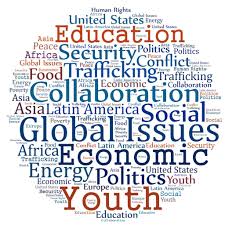Revolutionizing Urban Spaces: A Blueprint for Sustainable Communities
The burgeoning global urban population necessitates a paradigm shift towards sustainable community development. As cities expand, prioritizing environmental stewardship and resident well-being is paramount. Creating globally sustainable urban environments ensures a future that is not only ecologically responsible but also economically vibrant and socially equitable. This article details fifteen key strategies for transforming urban landscapes into thriving, sustainable communities.
1. Strategic Urban Planning: Sustainable communities begin with thoughtful urban design. Prioritizing walkability, mixed-use zoning, and ample green spaces creates healthier, more vibrant neighborhoods that enhance resident well-being. Efficient land use minimizes sprawl and reduces environmental impact.
2. Embracing Renewable Energy: Transitioning to renewable energy sources like solar and wind power is fundamental to sustainability. Reducing reliance on fossil fuels drastically minimizes carbon footprints, contributing to cleaner air and a healthier environment for all.
3. Sustainable Transportation Networks: Efficient and sustainable transportation systems are vital for mitigating congestion and air pollution. Investing in robust public transit, cycling infrastructure, and promoting electric vehicles drastically improves urban air quality and resident mobility.
4. Comprehensive Waste Management: Implementing robust recycling and composting programs significantly reduces landfill waste. Furthermore, transitioning to a circular economy minimizes resource consumption and maximizes material reuse, fostering a more sustainable approach to waste management.
5. Integrating Urban Agriculture: Integrating urban farming, through rooftop gardens and community plots, offers fresh, local food sources, enhances community resilience, and strengthens social bonds within neighborhoods.
6. Leveraging Green Infrastructure: Green infrastructure, including green roofs, rain gardens, and permeable pavements, effectively manages stormwater runoff while improving air quality, biodiversity, and overall urban aesthetics.
7. Harnessing Smart Technologies: Smart technologies optimize resource management and enhance urban life. Smart grids, intelligent transportation systems, and smart buildings increase energy efficiency and improve the overall quality of urban services.
8. Ensuring Affordable Housing: Access to affordable and energy-efficient housing is crucial for building inclusive communities. Integrating affordable housing into urban planning ensures equitable access to quality living spaces for all income levels.
9. Empowering Through Education and Awareness: Educating citizens about sustainable practices fosters informed decision-making and encourages active participation in creating sustainable urban environments. Promoting environmental awareness is key to long-term success.
10. Fostering Public Participation: Actively engaging citizens in urban planning fosters a sense of ownership and strengthens community buy-in. Collaborative decision-making leads to more livable and sustainable urban spaces tailored to community needs.
11. Promoting Sustainable Tourism: Sustainable tourism practices benefit both the environment and local economies. Responsible tourism preserves cultural heritage and generates economic opportunities without compromising environmental integrity.
12. Cultivating Collaborative Partnerships: Effective sustainable development requires collaboration between governments, businesses, academia, and civil society. Shared resources, expertise, and knowledge accelerate progress toward shared sustainability goals.
13. Building Urban Resilience: Cities must adapt to climate change and other environmental threats. Incorporating resilience strategies into urban planning ensures communities can withstand and recover from natural disasters more effectively.
14. Prioritizing Social Equity: Sustainable communities must ensure equitable access to resources and opportunities for all residents. Addressing social inequalities creates cohesive and inclusive urban environments.
15. Continuous Monitoring and Adaptation: Building sustainable communities is an iterative process requiring continuous monitoring, evaluation, and adaptation. Regularly assessing progress and adjusting strategies ensures ongoing improvement and resilience.
In conclusion, transforming urban landscapes into sustainable communities is not merely aspirational; it's a necessity for the planet's well-being and future generations. By embracing innovative approaches and prioritizing sustainability principles, we can create thriving cities that are both environmentally sound and socially prosperous. Join the movement towards sustainable urban development – let's build a better future, together.




No comments yet. Be the first to share your thoughts!